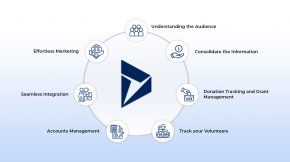How Business Analysis Fixes Customer Pain Points and Boosts Satisfaction
A recent study by PwC shows that 73% of people say customer experience (CX) is a key factor in their buying decisions. Yet, many businesses still struggle to meet customer expectations. In today’s competitive world, creating exceptional CX is not a luxury—it’s a must. Customers demand more than just products or services. They want seamless, personalized experiences that make them feel valued.
At Beyond Key, we believe that business analysis (BA) is the key to achieving this. With the right BA strategies, companies can better understand their customers and align their offerings with what customers truly want. In this blog, we will explore how business analysis can improve customer experiences, highlighting the key approaches, techniques, and challenges along the way.
Understanding Business Analysis and Customer Experience
Business analysis is a way to solve problems. It looks at how a business works. Then, it finds areas to improve. A business analyst connects different teams. This person makes sure the solution is good. Not just on paper, but also for the customer.
On the other side, customer experience (CX) is about how a customer feels. It’s how they see the company. A good CX means happy customers. Happy customers stay longer. They also bring in more people. When BA and CX come together, the result is powerful. Data is used to improve services. This makes customers feel valued.
How Business Analysis Helps Improve Customer Experience
There are many ways BA makes CX better. Here are some of them:
Finding Out What Customers Need
ne big part of BA is to understand the customer. We do this by asking questions. We conduct surveys and interviews. We want to know what customers feel. What is hard for them? What do they expect? From this, we gather important details.
For example, an online shop may find that people leave items in their cart. Why? The checkout is too hard. A business analyst may suggest a simpler process. Maybe just one click to buy. This helps the customer. It also helps the business. Sales go up.
Mapping the Customer Journey
Another tool we use is customer journey mapping. This shows how a customer interacts with the company. It follows them from the start to the end. BA helps find points that are tough for customers.
For example, a bank may want to improve their mobile app. They can map how a customer uses it. Maybe the customer struggles to transfer money. Or maybe applying for a loan is hard. BA can suggest fixes. This makes the app smoother. Customers feel better. They trust the company more.
Key Techniques in Business Analysis for Better CX
Here are some important techniques we use in BA to improve CX:
SWOT Analysis
This is a simple tool. It helps businesses know where they stand. We look at four things: strength, weakness, opportunity, and threat. From this, we can plan better.
For example, a company may have a strong website. But they are slow in answering customer questions. This is a weakness. BA may suggest using chatbots. These can give a quick response. This makes the customer happy.
Collecting the Right Requirements
To solve problems, we need the right details. We collect these through workshops and meetings. We talk to the people who will use the system. This way, we know what they need.
For example, a software company may want to launch a new feature. BA will talk to the developers and the users. This ensures the feature is good. It meets the customer’s needs. As a result, they like it more.
Prototyping and Testing
Prototyping is another useful method in BA. It is like making a small version of the product. Users can try it and give feedback. Usability testing checks how easy it is to use.
For example, in app development, this is very helpful. Customers can find problems early. This saves time and money. The app becomes better before it’s even fully made.
Using Data to Make Better Decisions
Data plays a big role in BA. It helps us make choices based on facts. This leads to better decisions for improving CX.
For example, predictive analytics can guess what a customer might need in the future. This lets businesses offer solutions before the problem even comes up.
Also, sentiment analysis can show how people feel about the company. This helps improve customer service or marketing plans. Using data like this helps build a deeper connection with customers.
Challenges in Improving CX through Business Analysis
Even though BA can help CX, it’s not always easy. Some common problems are:
Data Silos: Sometimes, data is stored in different places. This makes it hard to understand the whole picture. Analysts need to push for connected systems. This gives a clear view of customer interactions.
Resistance to Change: People don’t always like change. When BA suggests new ideas, some may not want to try them. Here, change management helps. It shows everyone the value of these new ideas.
Limited Budget: Money is often tight. Not all suggestions can be done. In this case, BA must focus on the most important changes.
New Trends in Business Analysis for Better CX
The world of BA is changing fast. Here are some new trends:
AI and Machine Learning: BA is using these tools more and more. They help predict customer behavior. This gives deeper insights.
Customer Data Platforms (CDPs): These systems collect data from different places. This helps analysts see the whole customer journey.
Agile Business Analysis: Companies need to be quick. The agile method helps. It lets companies make small changes fast. This is good because customer preferences can change quickly.
Conclusion
Business analysis is very important for improving customer experience. It helps companies understand what customers need. It shows how to solve their problems. From mapping the customer journey to making data-driven choices, BA makes sure companies meet customer expectations.
As customers want more, the role of BA is growing. It will continue to use new tools and ideas. This helps businesses stay ahead.












